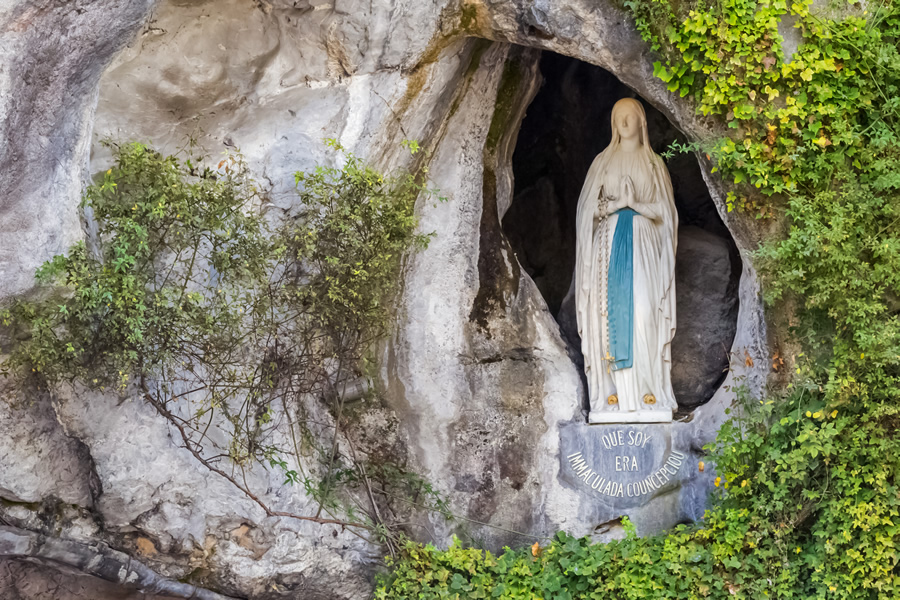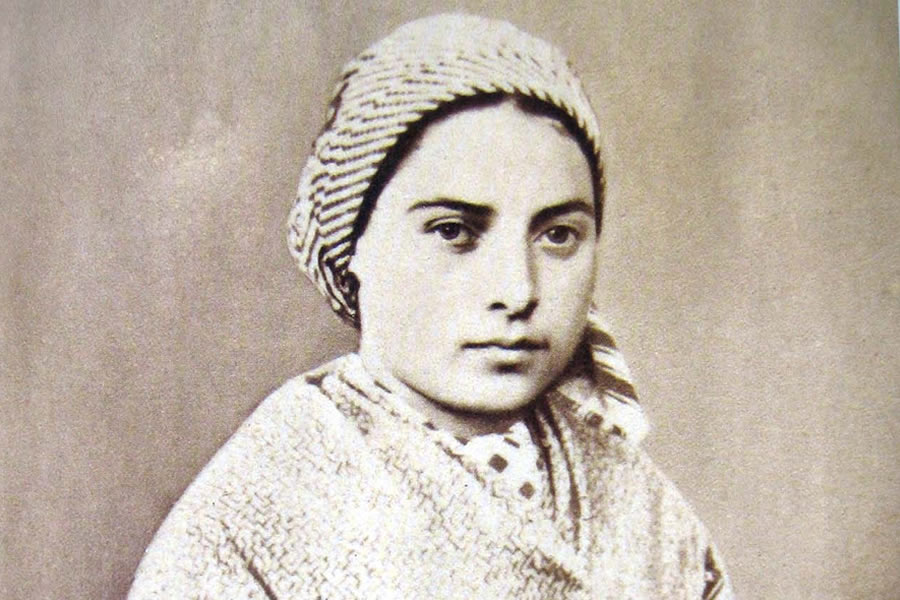
Relics of St. Bernadette: The Apparitions
07-31-2022Letter from the PastorFr. Don Kline, V.F.February 24 - March 1 – Eighth to twelfth apparitions: penance and the discovery of the spring.
In these days of February and of March, the Church is in the season of Lent. The bishop of the diocese had recommended spending Lent with special emphasis on prayer, preaching and penance. At the grotto Bernadette hears and repeats the words of the lady: "Penance, penance, penance. Pray to God for the conversion of sinners." At her request, Bernadette walks on her knees in the grotto. Once, she eats the grass growing there. All of that, "for sinners", like Christ who humbled himself even to death on the cross.
READ MORE
Relics of St. Bernadette: The Apparitions
07-24-2022Letter from the PastorFr. Don Kline, V.F.Dear Brothers and Sisters,
There were no less than 18 Apparitions where Our Blessed Mother appeared to St. Bernadette at the grotto in Lourdes, France. They began on February 11, 1858.
February 11 - First apparition: the first contact.
Bernadette came with two other girls to collect firewood. She felt a gust of wind, although the trees did not move. All of a sudden, there was a light in the grotto. The light had the shape of a young girl.
READ MORE
Relics of St. Bernadette Part 4: Who is St. Bernadette?
07-17-2022Letter from the PastorFr. Don Kline, V.F.Dear Brothers and Sisters,
Marie Bernarde Soubirous (Bernadette) was born on January 7 of 1844 in Lourdes - a modest town with a population of 4,135 and a passageway for travelers on their way to the surrounding towns.
Her family lived a very simple life working at the Boly Mill, East of the town, for decades. Her parents endured several financial hardships due to competition from new steam-powered technology and to illness and death in the family.
READ MORE
Walking with Moms In Need
07-13-2022Letter from the PastorFr. Don Kline, V.F.Dear Brothers and Sisters,
Peace and Joy in Our Lord Jesus Christ!
First, thank you for all of your sacrifices, prayers, and financial support which have helped make possible this culture of life moment and the end of Roe v. Wade and Planned Parenthood v. Casey. This amazing moment in our lifetime is a victory for the Gospel of Life! Giving thanks to God is certainly an appropriate response but there is more for us to do.
READ MORE
Relics of St. Bernadette Part 3: What are relics?
07-10-2022Letter from the PastorFr. Don Kline, V.F.Dear Brothers and Sisters,
On 18th April 1925, forty-six years after her death, the body of Bernadette Soubirous was exhumed so that relics could be retrieved.
This mission was entrusted to Doctors Comte and Talon. Doctor Comte took the first samples from the body which “was of a soft and almost normal consistency”, he wrote in 1928 in the Bulletin of the Medical Association at Our Lady of Lourdes.
READ MORE
Relics of St. Bernadette Part 2: Why are relics significant?
07-03-2022Letter from the PastorFr. Don Kline, V.F.Dear Brothers and Sisters,
It might be helpful to cite a recognized Church authority on the matter, (i.e., The Catechism of the Catholic Church (CCC) or perhaps The Code of Canon Law) to provide “legitimacy” to the answer to: “Why are relics significant?”
CCC No.1674: “The religious sense of the Christian people has always found expression in various forms of piety surrounding the Church’s sacramental life, such as the veneration of relics…” Also, regarding veneration, the CCC’s Glossary states, “Veneration must be clearly distinguished from adoration and worship, which are due to God alone.”
READ MORE